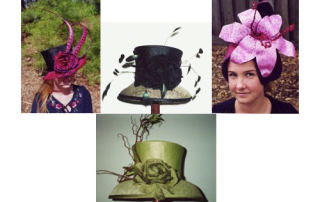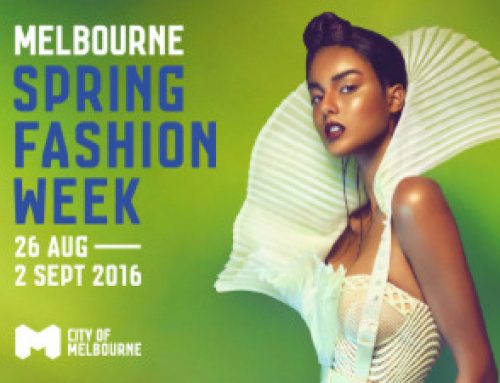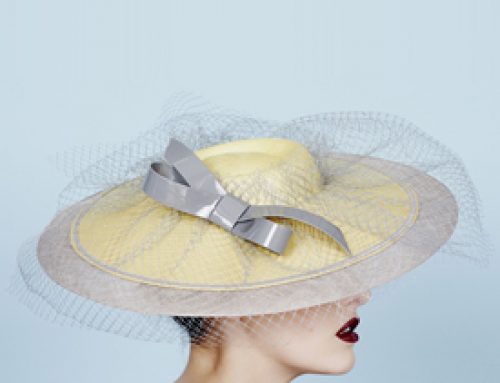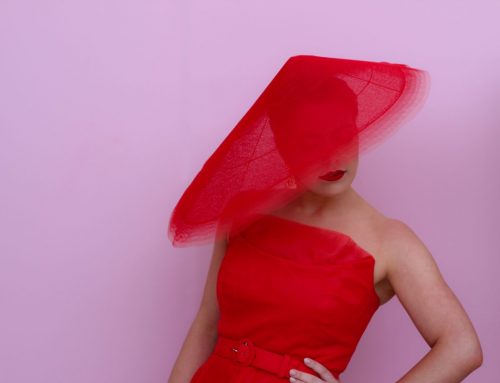How did you become interested in millinery and flower making?
I always had a fascination with hats. I loved looking through family photos to see the styles change through out the years. As a textile designer, many of my first pieces, both screen printed and woven, were made into children’s hats, adorning many of my family members’ heads. As a child I made flowers out of any material I could find. Now I’ve taken the next step with my flowers, by using handcrafted tools along with modern fabrics and have been able to realize my dream.
Where did you learn millinery and flower making?
While I was studying studio textiles in Warrnambool I stumbled across a six-month course at the Melbourne school of millinery. As a budding milliner I wanted desperately to join the profession. I was then fortunate to be offered a position with Waltraud Reiner. While working with Waltraud a large portion of the curriculum was focused on the skill of French flower making. Yet many other traditional millinery techniques were taught, enabling me to combine the established techniques with contemporary fabrics and designs.
How long have you been a milliner for? Where else did you work?
I have been a milliner for roughly 9 years. While working with Waltraud I also taught at her millinery school, The Caulfield Milliner, Kim Fletcher Millinery Art. Over the last 4 years I have been working extremely hard on establishing my own range.
Where do you get inspiration for your designs?
I get my inspiration through various means such as life experiences, colours and textures, flowers, nature. Also, my childhood was spent on my parents’ property in Western Victoria. Many of my designs incorporate the elements of this lifestyle. Many a day was spent out on the farm, giving me plenty of time to explore. The sheds were full of amazing odds and ends, which gave me a chance to experience and touch many different materials and how each odd and end could be used in the designing and establishing of many different pieces of art, and as a child there was no shortage of “original” works scattered about. This is how I now like to look at my millinery creations. I start with a concept, and work from the raw material and eventually through sculpting the piece I can create a finished product, that provides a purpose for the client whilst at the same time maintaining sophistication and originality.
What has been your most enjoyable commission?
I love to see the excitement and pleasure on the faces of my clients. Starting from their ideas and working through until the finished product.
How would you describe your style of hats?
By combining traditional techniques with modern fabrics and blocks, I am able to create designs that are contemporary whilst at the same time maintaining classic elements. Simplistic structures combined with striking trims form the basis to my designs. Handmade French flowers, feathers and sinamays unite to form original couture works that can be designed and fitted for any occasion.
Who do you make hats for? That is, church goers? Brides? Everyday winter wear?
The majority of my clientele are race goers. However, I am starting to become busier with bridal parties. Throughout the year I am also kept busy working for designers mainly making various types of flowers.
What materials and techniques do you favor?
Straws and felts and silk are my favored materials. These give me the freedom to mould and form shapes and structures which allow each work to be both unique and boldly eye-catching. Shaping such materials by hand also means that I can utilize many designs and am not restricted to using the same blocks. This allows me to offer each client a creation which they can always wear and enjoy, knowing it is an artwork in itself.









